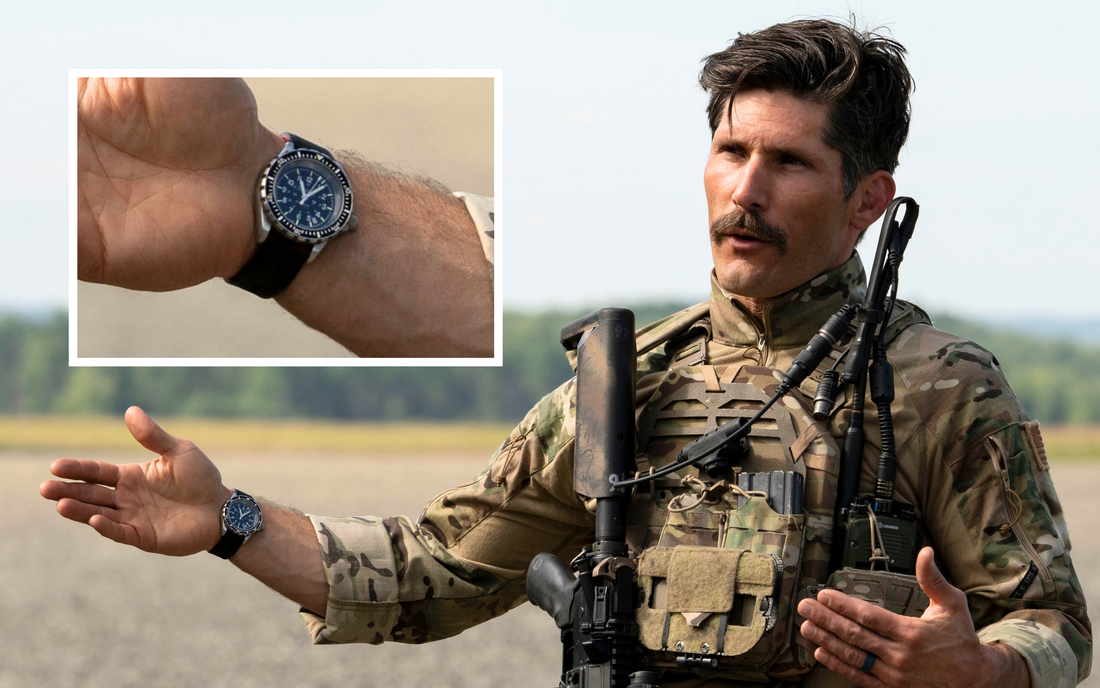And Why You Probably Shouldn’t
Look at photos from any conflict over the past 50 years and you are bound to see uniformed US military personnel wearing a wristwatch on the inside of their wrist. While it’s difficult to pinpoint when exactly this tradition began, Vietnam-era Green Beret and MACV-SOG operator John Stryker Meyer AKA “Tilt” told us it was a habit he picked up in Special Forces training in the 1960s.
The practice of wearing a watch on the inside of the wrist has several functional benefits in a tactical environment, including protecting the glass/crystal from damage, preventing glare or reflections, and ensuring the watch is legible while operating a weapons system or lying prone.
That said, I would argue today “inside-wristing” is just as much about culture as anything else. A watch is one of the few items customizable by uniformed personnel and for some it is a sign that you are a “gunfighter”, “operator” or play Call of Duty on the weekends.

NSW operators train Hellenic special operations forces in 2024.
First, let's explore some of the legitimate reasons why military personnel wear watches on the inside of the wrist.
To Negate Reflection: Managing one's profile—how easily you are seen or discovered—is a key part of any military operation. Camouflage is the most obvious example, but something as small as a glare or reflection of a wristwatch in a sniper hide or while moving to target could compromise an operation. There are few reflective things in nature and a trained observer is always looking for something abnormal. Wearing the watch on the inside of the wrist reduces this risk.

Delta Force member with Suunto compass/watch combo, the watch on the inside of the wrist.
Light Signature Management: In a tactical environment, a watch's nighttime legibility is essential. Most analog military watches incorporate luminous phosphorescent “lume” on the dial and hands and Digital Tool Watches (D.T.W.s) have a push button illumination function. “Light discipline” is a part of signature management in low light/no light scenarios, and the lume can pose a potential vulnerability, especially with dive watches that are designed for underwater legibility.
Tritium, a radioactive isotope commonly used in military watches, is particularly visible through Night Vision Goggles and scopes. Again, wearing the watch on the inside of the wrist diverts the light towards the individual vs towards the enemy, potentially reducing your signature.

Modern dive watches like the Tudor FXD offer significant illumination, which is ideal for diving but not for combat. (Photo Credit: W.O.E./James Rupley)
Of note, over time military members have used several other methods to mitigate the reflection and light emissions, including a simple watch cover, with Vietnam Era Navy SEALs fashioning snap-in rivets to attach a thin leather watch cover.
In the African bush wars, this was also common and served the additional purpose of protecting the watch against harsh environments and thorns.

Legendary SEAL Barry Enoch wears a Tudor Submariner with a custom leather cover intended to limit reflections.
Running The Gun: One of the most common reasons people point to for wearing the watch inside the wrist is that it is easier to check the time when weapons handling during combat and/or Close Quarters Battle (CQB). The idea is that with the watch on your support hand extended on the rifle, the time is visible without canting or adjusting your wrist. While I wonder how often someone really checks the time during a gunfight, this theory likely has validity for those with extended periods lying prone and/or in a sniper hide where movement could give up your position.

10th Special Forces Group conducting CQB training.
Additionally, some former SOF members I spoke with explained that wearing the watch inside the wrist makes it easier to check the time with bulky gloves and prevents grinding the watch into the wrist during push-ups and obstacle course runs.
Cool Guy Fashion: Despite the many legitimate reasons for practitioners to wear watches on the inside of the wrist, I would argue that for many it boils down to culture and personal expression. “Tacticool” fashion, whether Merrell shoes, 5.11 pants, Oakleys or beards, and American Flag baseball hats, generally starts with SOF units, born out of utility. It is then picked up by the “regular” military and ultimately filters down to pop culture, civilians, and weekend warriors.

SEAL Team TV Show.
Why You Shouldn't “Inside Wrist”
As a former CIA Case Officer, I generally avoid anything that is tacticool. While it may be a practical application for law enforcement, SpecOps, and uniformed military personnel, a black Digital Tool Watch on the inside of your wrist is a clear “tell,” a signal to others that one is a “quiet professional-gray man.” For Case Officers, who mostly operate in capital cities while undercover (i.e. posing as something they aren’t) this watch can make one stick out as much as a gold Rolex Daytona.
That said, at the end of the day you should enjoy this hobby in any way you see fit. If you want to LARP as a Navy SEAL, LARP on.
If you enjoyed this article, please consider signing up for our weekly free newsletter for further updates HERE.
Read Next: DARPA’s Take on the Next Generation of Military Watches









28 comments
It’s a great way to nonchalantly check the time. I wear it inside the wrist to check the time in management meetings without the boss noticing. It has a role in dignitary protection for the same reasons. You can check the time just by clasping your hands. I had a Drill Instructor who would wear it inside so recruits wouldn’t notice and then surmise they might be going somewhere soon.
Great material as always. S/F
I wore my watch inside my wrist in the Navy when I was on the VBSS team, but ONLY during boardings. It was mostly about protecting the face, but also telling time while armed. Nowadays, I’ll wear my watch on the inside of my wrist when cycling at night and only then. It makes it easier to charge the lume in the bike’s headlight.
A terrific piece as always WoE! I have a job that requires regular manual labor and wear the watch on the inside of the wrist to protect the glass. I do switch it around to the regular side when not working though. Keep up the fun work.